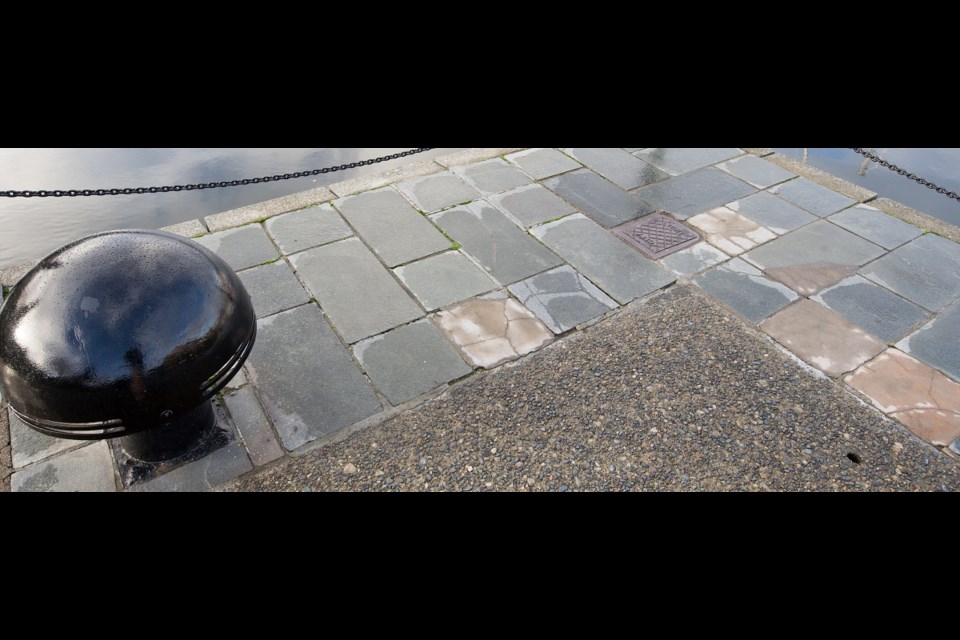Victoria wants to make sure a “temporary” concrete patch to the outer edge of the Inner Harbour causeway promenade doesn’t become permanent.
“One of the things that’s often been said with some irony and good humour is that temporary in Victoria can sometimes mean 50 years,” said Coun. Pam Madoff.
During maintenance and upgrade work on the Welcome to Victoria side of the causeway’s water edge, significant deterioration was discovered, Merinda Conley, senior heritage planner, told councillors.
Problems cited by Conley were unbonded, loose and cracked quartzite tile, damaged lights, a series of previous incompatible repairs in multiple locations along the causeway as well as the condition of the concrete substrate, exposure of the steel reinforcing and the base of the mushroom lights. The loose tile causes a safety problem, Conley said.
Engineers hired by the Greater Victoria Harbour Authority, which owns the causeway, have determined that not only does the existing half-inch-thick tile not meet current industry standards, the top steel reinforcing along the entire tile apron was installed without adequate concrete, which might be contributing to the tile coming loose.
They are recommending the existing tile along the apron be replaced with a concrete screed topping until a full, detailed study and conservation plan is completed. Concrete alone has the potential to have very high strength. A screed is used as a top layer or finish.
Designed in the 1970s, the Lower Causeway is a federally designated heritage site. That means a heritage alteration permit is needed to do the work.
Because there’s a safety issue, councillors agreed to issue the heritage alteration permit but only if a memorandum of understanding can be obtained specifying the fix is temporary and is not acceptable as a long-term solution.
Madoff said it has to be understood that the concrete screed “is not a material that would be seen as appropriate for a permanent installation on the Lower Causeway” and it’s important the city keep in contact with the harbour authority about the project.
“I think what they’re going to find, and it’s reflected in the report today, that this is much more than simply resurfacing this area. The substrate and the conditions with the reinforcing below it, I think, are going to have to be dealt with as well,” she said.
Conley said the concrete screed “is not an ideal solution,” but it does provide short-term protection and helps address safety hazards “until a full conservation, engineering assessment and asset management plan can be undertaken and a phased repair completed.”
“The proposed concrete screed would be designed to be compatible with the surrounding materials by ensuring its appearance in texture, colour and bond pattern match the existing quartzite tile as in kind as possible,” Conley said.
She said the city’s heritage advisory panel does not support the proposal and has expressed concern about lack of information regarding long-term planning, proposed materials and methods of patching.



